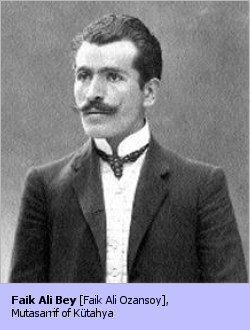
Germany has decided to name several neighborhoods, streets, buildings, and public schools in Berlin and other German cities after Adolf Hitler and other Nazi “heroes.”
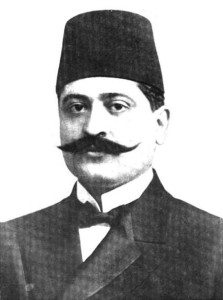
If the above statement were to be true, how would you react? How do you think Germans would react? How do you think Jews still living in Germany would react? My guess is that you, the Germans, and the Jews would all find it inconceivable, offensive, and unacceptable.
And yet, it is true in Turkey, where it is acceptable to name several neighborhoods, streets, and schools after Talat Pasha and other Ittihat ve Terakki (Committee of Union and Progress) “heroes” who not only planned and carried out the Armenian Genocide, but were responsible for the loss of the Ottoman Empire itself.
At last count, there were officially 8 “Talat Pasha” neighborhoods or districts, 38 “Talat Pasha” streets or boulevards, 7 “Talat Pasha” public schools, 6 “Talat Pasha” buildings, and 2 “Talat Pasha” mosques scattered around Istanbul, Ankara, and other cities. After his assassination in 1922, Talat was originally interred in Berlin, Germany, but his remains were transferred to Istanbul in 1943 by the Nazis in an attempt to appease the Turks. He was re-buried with full military honors at the Infinite Freedom Hill Cemetery in Istanbul. The remains of the other notorious Ittihat ve Terakki leader, Enver Pasha, were also transferred in 1996 from Tajikistan and re-buried beside Talat, with full military honors; the ceremony was attended by Turkish President Suleyman Demirel and other dignitaries.
Is this hero worship misguided or deliberate? Is the denial of 1915 only state policy, or is it wholeheartedly accepted by the Turkish public, brainwashed by the state version of history?
Undoubtedly, there was mass participation in the genocide committed by the Ittihat ve Terakki leaders, resulting in the removal of Armenians from their homeland of 3,000 years, as well as the immediate transfer of their wealth, property, and possessions to the Turkish and Kurdish public, and to thousands of government officials. Yet, despite this mass participation and the hero worship, there were also a significant number of ordinary Turks and Kurds, as well as government officials, who refused to participate in the massacres and plunders. There is complete silence and ignorance in Turkey about these righteous officials who refused to follow government orders and instead tried to save and protect the Armenians. They paid dearly for their actions, often with the loss of their positions or even their lives as a consequence. This article will cite some examples of these real and unsung heroes.

Celal Bey was the governor of Konya, a vast central Anatolian province and a hub for the Armenian deportation routes from north and west Anatolia to the Syrian desert. He knew exactly what the Armenians’ fate would be along these routes, or if they survived the deportations and reached Der Zor; he was previously the governor of Aleppo and had witnessed the atrocities there. Celal Bey had attempted to reason with the Ittihat ve Terakki leaders, saying that there was absolutely no Armenian revolt in Anatolia, nor in Aleppo, and that there was no justification for the mass deportations. However, one of his subordinates in Marash inflamed the situation by arresting and executing several Marash Armenians, triggering a resistance by the Armenians. As a result, Celal Bey was removed from his governor’s post in Aleppo and transferred to Konya. Once there, he refused to arrange for the deportation of the Konya Armenians, despite repeated orders from Istanbul. He even managed to protect some of the Armenians who were deported from other districts and arrived in Konya. By the time he was removed from his post, in October 1915, he had saved thousands of Armenian lives. In his memoirs about the Konya governorship, he likened himself to “a person sitting beside a river, with absolutely no means of rescuing anyone from it. Blood was flowing down the river, with thousands of innocent children, irreproachable old men, and helpless women streaming down the river towards oblivion. Anyone I could save with my bare hands, I saved, and the rest went down the river, never to return.”
Hasan Mazhar Bey was the governor of Ankara. He protected the Ankara-Armenian community by refusing to follow the deportation orders, stating, “I am a vali [governor], not a bandit. I cannot do this. Let someone else come and sit in my chair to carry out these orders.” He was removed from his post in August 1915.
Faik Ali (Ozansoy) Bey was the governor of Kutahya, another central Anatolian province. When the deportation order was issued from Istanbul, he refused to implement it; on the contrary, he gave orders to keep the deported Armenians arriving in Kutahya from elsewhere, and treat them well. He was soon summoned to Istanbul to explain his subordination, and the police chief of Kutahya, Kemal Bey, took the opportunity to threaten the local Armenians—either convert to Islam or face deportation, he said. The Armenians decided to convert. When Faik Ali Bey returned, he was enraged. He removed the police chief from his post, and asked the Armenians if they still wished to convert to Islam. They all decided to remain Christian, except one. Faik Ali’s brother, Suleyman Nazif Bey, was an influential and well-known poet who urged his brother not to participate in this barbarianism and stain the family name. Faik Ali Bey was not removed from his post despite his offers of resignation. He ended up protecting the entire Armenian population of Kutahya, except for the one who converted to Islam and was deported.

Mustafa Bey (Azizoglu) was the district governor of Malatya, a transit point on the deportation route. Although he was unable to prevent the deportations, he managed to hide several Armenians in his own home. He was murdered by his own son, a zealous member of the Ittihat ve Terakki Party, for “looking after infidels [gavours, in Turkish].”
Other government officials who defied the deportation orders included Reshit Pasha, the governor of Kastamonu; Tahsin Bey, the governor of Erzurum; Ferit Bey, the governor of Basra; Mehmet Cemal Bey, the district governor of Yozgat; and Sabit Bey, the district governor of Batman. These officials were eventually removed from their posts and replaced by more obedient civil servants, who carried out the task of wiping out the Armenians from these locations.
One of the most tragic stories of unsung heroes involves Huseyin Nesimi Bey, the mayor of Lice, a town near Diyarbakir. While the governor of Diyarbakir, Reshit Bey, organized the most ruthless removal of the Armenians in the Diyarbakir region—with a quick massacre, rather than lengthy deportation, immediately outside of the city limits—Huseyin Nesimi dared to keep and protect the Lice Armenians, a total of 5,980 souls. Reshit summoned Huseyin Nesimi to Diyarbakir for a meeting, but arranged to have his Circassian militant guard Haroun intercept him en route. On June 15, 1915, Haroun murdered Huseyin Nesimi and threw him into a ditch beside the road. Since then, the murder location, halfway between Lice and Diyarbakir, has become known as Turbe-i Kaymakam, or the Mayor’s Grave. The Turkish records document this murder as “Mayor killed by Armenian militants.” In an ironic twist of history repeating itself, in October 1993 the Turkish state army attacked Lice, supposedly to go after the Kurdish rebel militants there; instead, they ended up burning down the entire town and killing the civilian population. This became the first case the Kurds took to the European Human Rights Court, resulting in a 2.5 million pound compensation against the Turkish state. At the same time, several wealthy Kurdish businessmen were targeted for assassination and murdered by then-Turkish Prime Minister Tansu Ciller. One of the victims was a man named Behcet Canturk, whose mother was an Armenian orphan who had managed to survive the Lice massacres of 1915.

Governor Reshit was also responsible for firing and murdering several other government officials in the Diyarbakir region who had defied the deportation orders: Chermik Mayor Mehmet Hamdi Bey, Savur Mayor Mehmet Ali Bey, Silvan Mayor Ibrahim Hakki Bey, Mardin Mayor Hilmi Bey, followed by Shefik Bey, were all fired in mid- to late-1915. Another official, Nuri Bey, the mayor of first Midyat and then Derik, an all-Armenian town near Mardin, was also fired by Reshit Bey, and subsequently murdered by his henchmen. His murder was blamed on Armenian rebels. As a result, all of the Armenian males in Derik were rounded up and executed, and the women and children deported.
The names of these brave men are not in the history books. If mentioned at all, they are labeled as “traitors” from the perspective of the official Turkish version of history. While the state and the masses committed a huge crime, and while that crime became a part of their daily life, these men rejected the genocidal campaign, based on individual conscience, and despite the temptation of enriching themselves. These few virtuous men, as well as a significant number of ordinary Turks and Kurds, defied the orders and protected the Armenians. They are the real heroes, and represent the Turkish version of similar characters in “Schindler’s List” or “Hotel Rwanda.” Citizens of Turkey today have two choices when remembering their forefathers as heroes: to either go with the mass murderers and plunderers who committed “crimes against humanity,” or the virtuous human beings with a clear conscience who tried to prevent the “crimes against humanity.” Getting to know these real heroes will help Turks break loose from the chains of denialist history over four generations, and start to confront the realities of 1915.
Sources
Tuncay Opcin, “Ermenilere Kol Kanat Gerdiler (They protected the Armenians),” Yeni Aktuel, 2007, issue 142.
Ayse Hur, “1915 Ermeni soykiriminda kotuler ve iyiler (The good and the bad in the 1915 Armenian Genocide),” Radikal newspaper, April 29, 2013.
Seyhmus Diken, “Kaymakam Ermeniydi, Oldurduler… (The mayor was Armenian, they killed him…),” Bianet, April 23, 2011.
Orhan Cengiz, “1915: Heroes and Murderers,” Cihan News Agency, Nov. 2, 2012.
Tuncay Opcin, “Ermenilere Kol Kanat Gerdiler (They protected the Armenians),” Yeni Aktuel, 2007, issue 142.
Ayse Hur, “1915 Ermeni soykiriminda kotuler ve iyiler (The good and the bad in the 1915 Armenian Genocide),” Radikal newspaper, April 29, 2013.
Seyhmus Diken, “Kaymakam Ermeniydi, Oldurduler… (The mayor was Armenian, they killed him…),” Bianet, April 23, 2011.
Orhan Cengiz, “1915: Heroes and Murderers,” Cihan News Agency, Nov. 2, 2012.




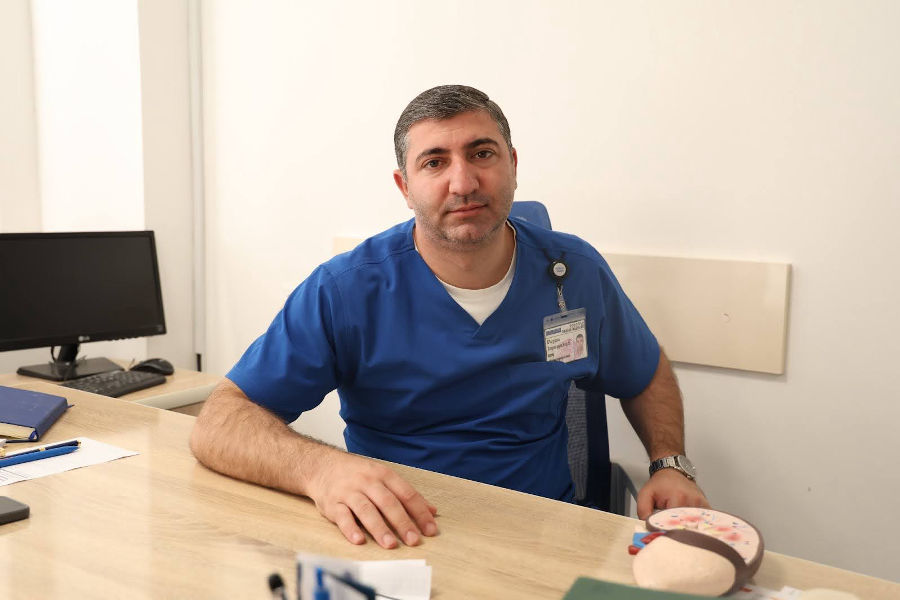

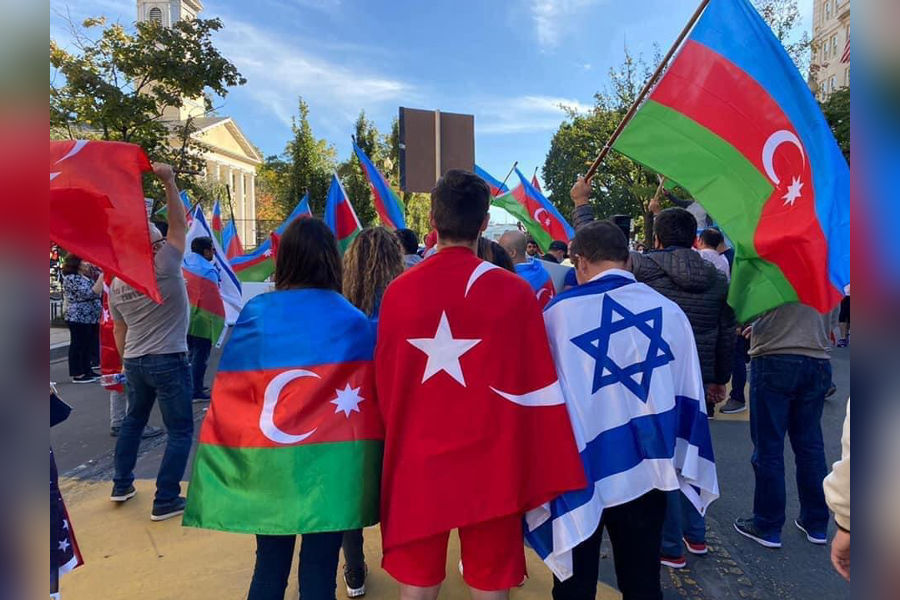
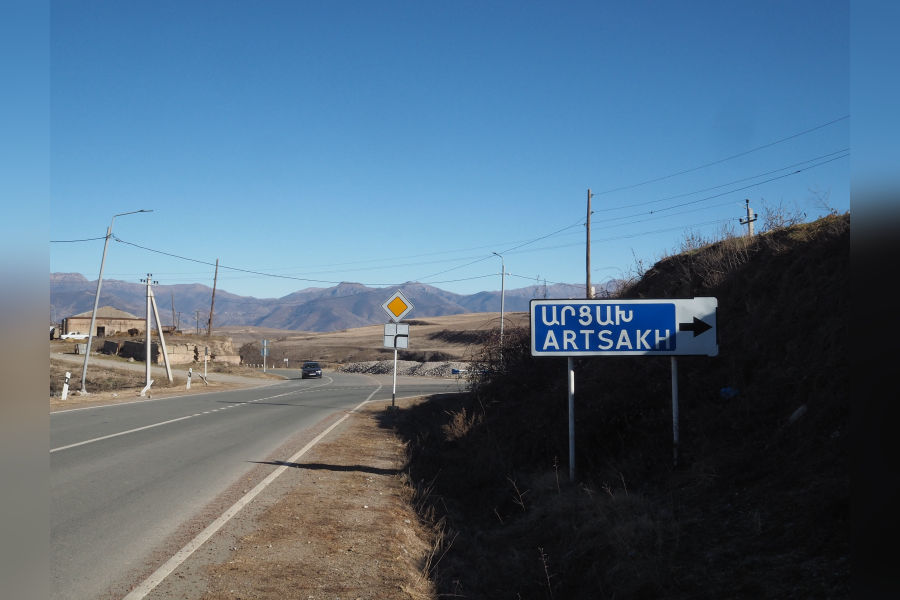
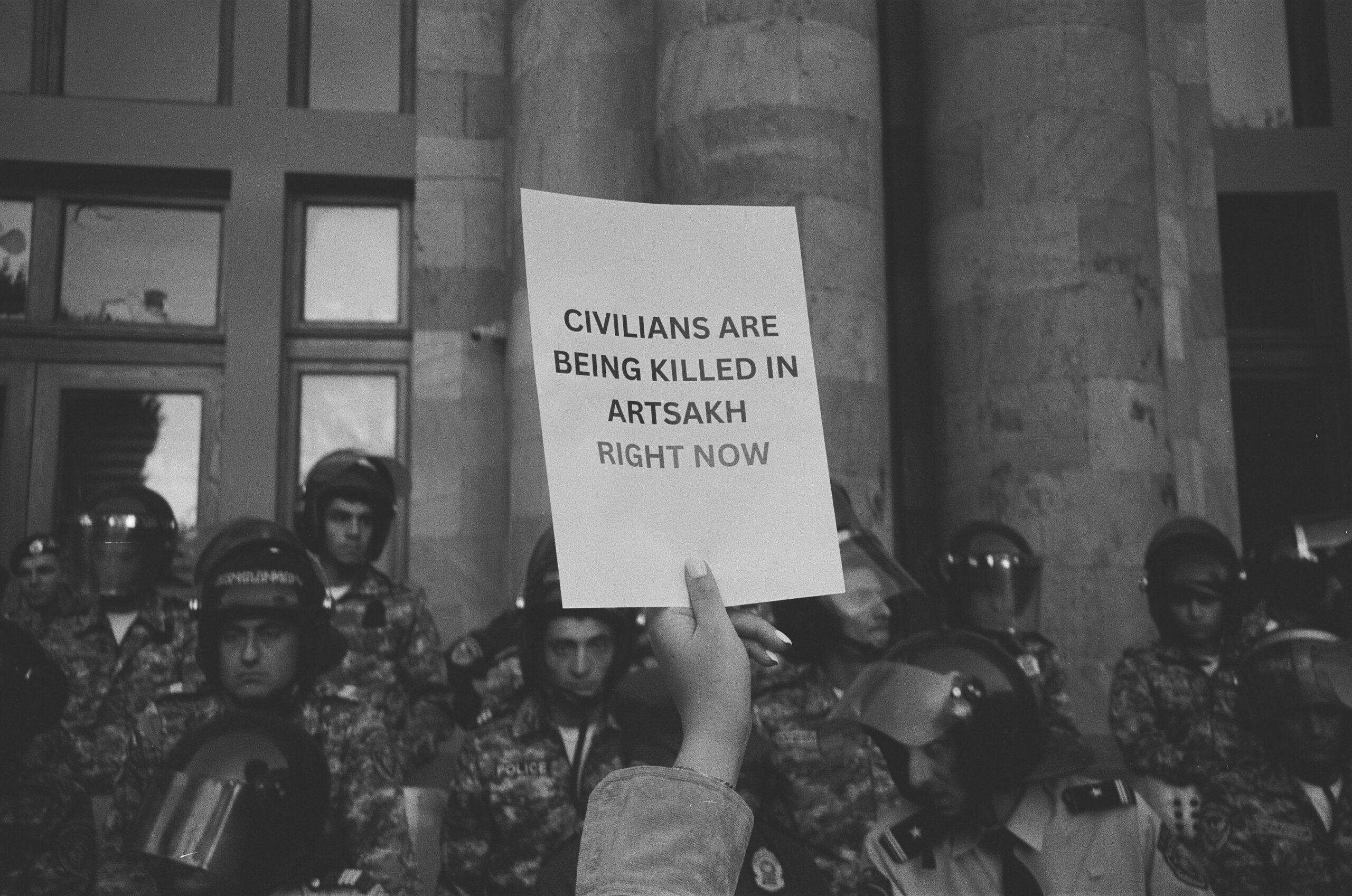
Excellent article. We, as Armenians, need to know the names of these real Turkish heros.
Many Armenians survived because of help they received from Turks. As Celal Bey stated, they saved who they could with their bare hands whiles thousands more perished.
Armenians should commemorate these heroes on April 24 and there should be a corner in Dzidzernagapert where these righteous Turks should be proudly displayed under the Turkish flag!
These pious Moslems and heroes took tremendous risks for their lives knowing that they could be hung in front of their houses as an example to what will happen to such Turks who help Armenians…
Missak
My mother (Born Rose Kasapyan in Ankara) had told us that the mayor of Ankara, Hasan Mazhar Bey, who was removed from his position because he refused to deport the Armenians from Ankara, as stated in the article above, his replacement (I don’t know his name) committed suicide. This should be verified by the historians.
This message is for Edward Cuhaci. I am a reporter for Swiss TV, interested in the history of the Kasapyan family. Could you please contact me by email? My address is my first name.my family name(at)rts.ch
many thanks!
Laurent Burkhalter
Dear Edward Cuhaci,
I am a reporter for Swiss TV interested in the history of the Kasapyan family in Ankara. I would like to ask you a few questions by email. Would you agree to get in touch with me? My address is my first name.my second name (at)rts.ch
many thanks,
Laurent Burkhalter
I have always known there were some few righteous Turks. I am deeply grateful to finally know some of they by name, and their stories. I agree they should be honored every April 24. That would underscore our just cause; we recognize the cherish the memory of righteous Turks who did their utmost in terrible circumstances to do the right thing. Thank you for this article, and all the work that went into researching it.
A clear and concise statement of exactly what the focus should be on when it comes to 1915. The multitude of places named for Talaat are an outrage against the conscience of the world. How Turkey can dream of joining the European Union and keep them as they are? I have never heard of any EU representative calling them into question. I’d love to be proved wrong.
The focus on the Turkish heroes mentioned is very healthy for all concerned and suggests a means of rescuing what is best for all Turkish citizens out of the ashes of the Ottoman Empire. Their names should begin to replace Talaat’s, one by one, on all the places named for him. That would be the first concrete evidence that Turkey has truly arrived at European standards. Until then, no matter how many churches are physically restored, it is all a sham.
Excellent article. I’ve heard anecdotes about Turks who refused to participate in Genocide. This review is great in that it gives names and places. For all Armenians who long for Hollywood to take up the subject, perhaps a film about one of these honorable Turks who tried to stop the actions would fill the bill. The horror of what occurred in 1915 is unpalatable for most of the public. It has to be a back story, like in Atom Egoyan’s Ararat to be made known through film.
Fantastic article and one that so demonstrates what the Armenian Genocide was all about at it’s core, that is the evil of man. Thank God that even amongst all that evil, there were those good who chose to do what was right despite the prevaling circumstances.
My own family survived the 1895 massacres due to the efforts of such heroic Turks who hid my great grandparents and others in their country home until the massacres ceased. I’ve heard of other such stories from Armenians.
We Armenians have a chance here to offer Turks an alternate model to the one they’ve been spoon fed with genocide denialist propaganda all these years. I so believe that this is where real acceptance and remorse for the Armenian Genocide on the part of the Turks can come from. That they can see for themselves that there were truly good examples of their brethern. Not only as Armenians, but as human beings, we need to help Turks to the truth, to set them free so to speak, and in so doing bring honor and justice to our fallen Armenian ancestors. Absolutely let us commemorate these heroic Turks on April 24 – in our museums, in our books, and in our films.
While I might sound insensitive, as a person a million miles from Turkey, can state the opinion of the rest of the world. The Rest of the world unfortunately is more interested in keeping up with the Kardashians than knowing what happened a hundred years ago.
I know some people will jump the gun to criticize me left and right, but I am just stating the opinion of the rest of the world.
“The Rest of the world”? No, Mr. Ali, as one of that “Rest”, I never recall hearing of the Armenian Genocide until I was about 40 and long out of school. Neither had I heard of the simultaneous and similar exterminations of the Ottoman Greeks and Assyrians until this past decade or so, when I was in my 60’s. This was not because I was uneducated. (Indeed, I highly credit my public school teachers of the ’50’s and ’60’s for the hard-working, unheralded, true public servants that they were.) It was because of our managed information sources, a fact then unknown to me. Our books on world history gave short shrift to Turkey, with just a brief mention citing Ataturk as being the founder of the “modern” Turkish state, presumably a democracy! Now I know of the sorry performance the “Great Powers'” in that theater of operations, both during and after World War I. For so many of us “rest”, the truth remains covered up to this day; but to anyone interested, I recommend “Ambassador Morgenthau’s Story” and “Genocide of the Ottoman Greeks”, for starters. Further, to anyone curious about the enormous Turkish influence in the modern world, read Rifat Bali’s “Model Citizens of the State”. Oil money and certain Ladino organizations still wield a heavy hand in the rule of world affairs.
Most of history has examples of such heroes. Of course, this is about our people and their history. Clarifying the truth in history books has always been a struggle, but we must persist. Only then will there be more justice and a sense of truth that will honor those that sacrificed so much. Excellent research and effort presented here. Thank you!
Excellent article. But Mazhar Bey did not just refuse to follow the criminal orders of the Young Turks. After the war he also headed a Turkish-led commission investigating the genocide, which has produced very important Turkish documents.
Excellent article! Very good research done! Those Turks and Kurds who did not follow the deportation orders and saved hundreds of Armenian lives should be praised. Such a kind and conscientious man was a Kurd, from Berejik, who my mother told me, saved hundreds of Armenian lives, who instead of sending them to Der el Zor, sent them somehow to Aleppo. He was a Kurd soldier, by the name Jamil Knneh, riding on a white horse. He got married to my mother’s aunt, a 16 years old beautiful woman at that time, and later on they got settled down in Aleppo, Syria. I had the opportunity to meet them in 1955, in Aleppo. My great aunt’s husband, this Kurd soldier, was a very kind and a very human person, and he was very affectionate toward me and my brother, as we were 9 and 13 years old kids. He would take and bring us around the city. I never forget his kindness.
We need to put their names on a plaque in Genocide Museum in Yerevan. This also can be a very interesting and historically educating documentary film.Our movie maker need to pay attention to this subject. Thanks Mr.Bedrosyan for this wonderful article.
Anna, do you go to USC?
Yes, the telling of the Armenian genocide is incomplete without these heroes. The genocide museum must add a section to cover this topic.
Very informative. Would love to see these heroic stories on youtube with beautiful Armenian music for accompaniment. I lack the skills but I am sure someone out there can do it.
“Germany has decided to name several neighborhoods, streets, buildings, and public schools in Berlin and other German cities after Adolf Hitler and other Nazi “heroes.”
If the above statement were to be true, how would you react? How do you think Germans would react?”
The Germans would react with repugnance. But would this repugnance be genuine, or a learned reflex?
One should ask themselves, how would Germans react had they not been indoctrinated by the Allied Occupation to think otherwise.
Living in eternal nationalistic frenzy and metaphysically obeying the ideals of Ataturk, Turkey today is very reminiscent of Nazi Germany. The Gezi Park demonstrators, sexy as they may be, were defending the Ataturk-given right of the Military to political power, not true democracy.
I am very pessimistic. Same as in Germany, I do not think that there exists in Turkey a critical mass of people who are willing to disobey the Chief of the Tribe. In Germany, nobody likes Mme Merkel. She makes colossal mistakes over and over, German economy stagnates, Germans are poorer than ever, yet she is expected to win by a landslide in September, just because she is bullying other countries into submission. And that’s in Germany, the partitioned, indoctrinated country. Turkey still has a long way to go before it becomes Germany. Which isn’t good enough.
And if you dare speak your opinion about democracy and Turkey, the Turkish liberals are the first to tell you to shut your mouth, because supposedly you have to give Turkey time. How much time? 500 years? 1,000 years?
I felt the same way about the Gezi Park demonstrations. While it was going on I could not help but think to myself: “This is the case of the Atheistic Atheist Turkish Extremists vs the Islamic Atheist Turkish Extremists”.
My mother was from marash,she had a close Turkish friend,she called bajeh,turk for sister,I believe,who grieved when she left.SHE HAD A MIXTURE OF ARMENIAN BLOOD.
although my great grandfather managed to save only one Armenian boy (who found his family in Aleppo after 10 years) I count him as a hero! Huseyin Aga of Malatya, of Kurdish Alevi descent!
Misto, a big thank you to your benevolent Great grandfather!
Put the pictures of the real heroes in your article. those are the ones that need to be seen.
Hello Robert, the photos of some of these heroes are now added to the article – Celal Bey – Konya governor, Faik Ali Bey – Kutahya governor and Huseyin Nesimi Bey – Lice mayor. Thanks, Raffi Bedrosyan
I am not Armenian, and am not interested in the Kardashians. But, I am very interested in this history, and hope to read more about these heroes in these pages. I have read many books about the Armenian Genocide, including books by Peter Balakian, Grigoris Balakian, and The Forty Days of Musa Dagh. I don’t remember any details about “righteous Turks”. I am very pleased to have found this article, and think this is information that should be shared with Turkish people, who could take pride in knowing this history. I commemorate April 24 by myself, not living in an Armenian community, but feel a need to honor the memory of the genocide. Now I can honor the memory of compassionate Turks and perhaps not have such Anti -Turkish sentiment in my heart. There is some hope!
Karen, many people feel like the way you do.. Sometimes I feel like our Armenian leaders failed us, then, I’m reminded that they had to be strict, focused and concentrating on keeping us emotionally engaged and motivated, until the Government of Turkey stops lying, denying and fabricating.. I disagree only that these heroes should have been honored LOUD and with equal love that they gave the Armenians. Hate as a glue is sooooo yesteryear. Just because a rude and offensive Turks, educated with made up “TARIH” Turkish history books, shouldn’t be the a source of hate for you to attack all Turks. The Government is the only body that we need to attack,, If the Turks wait and take the new DNA tests coming out in 3-4 years, they will be in a deep surprise.. (the Mirror exposes plenty, but, a new generation DNA-test, might give those misled Turkish students: the REALITY).
Vahagn, I did not understand your question. I did not go to USC, but please give me more details regarding your question.Thanks.
I thought you were someone I knew, Anna. I was just asking if you study at USC. It’s ok, no biggie.
Was not also the Mayor of Smyrna one who helped?
Baron Bedrosyan, This is indeed an exencellent article and thank you. If you could also please gather their individual pictures, so that we and everyone else could see who those unsung heroes were. Armenians could also lit a candle for them every April 24th around the world. They would be worth it.
Alexander Lewis’s suggestion above is very well taken.
Pictures are now added, thanks, Raffi Bedrosyan
This is my 6th email to you pretesting against the photo all others your dishonest censor removed them…are we living in turkey…it is great shame to have the killer face on this site instead Heroes…Awake and apologize…what a provoking photo to feel us depressed…!!!
God will punish who put such a photo on our site…!!!
Wow. A very informative article. I agree with the comment regarding commemoration of these brave and noble Turkish officials that had the courage to stand up against “just following orders” and opposed the brutality they were being asked to commit and enable.
It would make for an interesting movie/book as well…
Getting these names into Turkish educational circles, asking Turkish intellectuals to justify why they are considered traitors could go a long way on the road towards acknowledgement and reparation.
When my grandmother was 4 years old an old Turkish woman took her in and raised her until my grandmother’s sisters came for her. It was at that time that the Turkish Army was going from house to house and village to village looking for Armenians. One night a Turkish Officer knocked on the old woman’s door and was about to take my grandmother. The old lady started to cry and told them “please do not take my granddaughter from me.” The Officer left without incident. My grandmother has since passed but when I was young she told me she prayed every night for this Turkish woman who saved her life!
Thank you for sharing this.
But if you happen to read the work “Armenien und Europa” by German Protestant missionary Johannes Lepsius, you’ll be ashamed to post under the pen name “Turk”. I sometimes wonder if savage Ottoman Turks–given the indescribable murders, tortures, mutilations, and humiliation of the innocent Armenian men, women and children–were made of the same human material as the rest of the mankind.
Berj,
Where is your Armenian hospitality? Turk appreciates valorous and humane Turks, as do we. Attributing murderousness to Turks is silly and not scientific; those genes are just like ours by the way.
Turk,
A difference between nationalist Turks and Armenians is that to the Nazis in Turkey, Armenians are nothing more than an anti Turkish concept, just as the individual Jew was turned into an anti German concept.
To Armenians, our memory of 1894-1923 is of good and bad individual Turks- not concepts, but flesh and blood people. Some like the Governor of Diyarbekir would have taught Himmler. Others, like his predecessor, were valorous. If you meet us, we will tell you of the friendly Turk, Kurd, or Arab who saved an ancestor much of the time.
Why do you include …Talat Pasha’s photo with the honest men…
We know him very well… every time we see his face …
We remember our lost grandfathers who vanished away…!!!
In “The Story of Near East Relief,” it discusses how Turkish neighbors in some towns tried to stop the deportations; some succeeded in stopping them for a while; when their Armenian neighbors were taken away, these Turks were crying and kissing the Armenians’ eyes; these Turks suffered and were punished as well. The conclusion in the book was that the orders were coming from the central authorities, not from the Turkish people. I bought this book and the book by Caleb Gates, president of Robert College; and both have a good narrative of what happened and they back up what my family told me. My family is both Ukrainian Jewish and Turkish Armenian, who lived through the Russian Civil War and lived in Turkey. I recommend everyone read these two books.
Dear Mr. Bedrosyan,
my grand grandfather Ohannes Matossian (the family was from Tokat, but at the end of the 19th some went to Egypt and others to Diyarbakir and then Aleppo) was among the Aleppo Armenian notables killed in 1915, but Mehmet Celân Bey managed to save his wife and most of his children, including my grandfather Nichan. I know about this since childhood thanks to my mother, who always told us about the good Turk governor of Aleppo who saved so many Armenians. I have recently read Akçam’s book, and would like to know if Celâl Bey’s Memories are available in English or French.
Thank you very much for your help.
Best regards
Hello Gregorio,
I am also from the Matossian line and would love to get in touch with you. I am trying to find more information regarding Ohannes. Let me know if you would like to get in touch. Thanks,
Heidi Moffatt
My grandparents from the province of Kharpert, were saved by a turkish family.
So I think we as Armenians should honor these brave men and those unknown turkish families, who by risking their own lives, saved thousands of Armenians.
Remarkable article. I would like to learn how many ‘hidden Armenian survivors’ there actually were. I have heard many of these survivors revealed that they were Christian and Armenian to their Turkish adoptive families upon reaching old age.
I am deeply shocked to learn that these genocidal and pathological killers were honoured by the highest authorities of Turkey.
This is proof that Turkey remains a genocidal state that will erupt whenever the opportunity arrives. The Kurds will obviously be the next victims. The Kurds must be fully armed with heavy weapons before this disaster occurs.
I am in the process of completing a family tree for the Galstaun family who settled in India and would love to be able to follow up on more research.
I enjoyed this Article very much. This Article shows proof that their were some good Turkish People who helped the Armenians.
Thanks for your article. 1915:we´ll never forget. Greetings from Armenians of Brazil.
About 15 years ago I was traveling on a plane. The person sitting next to me introduced himself and said he was a Turkish. I told him that I am Armenian and that my family left Anatolia in 1915. He told me that his grandparents in Gurin hid and saved an Armenian family in 1915. I was so moved by this story that I told him when he talks to his parents to tell them that he met an Armenian grandson of survivors on the plane. I told him it was very important for me that he thanked them or his grandparents if they were alive next time he spoke with them. After I told him all this there was a long silent pause. He promised he would. I told him anyone that helped even one person is appreciated by The Armenian people.